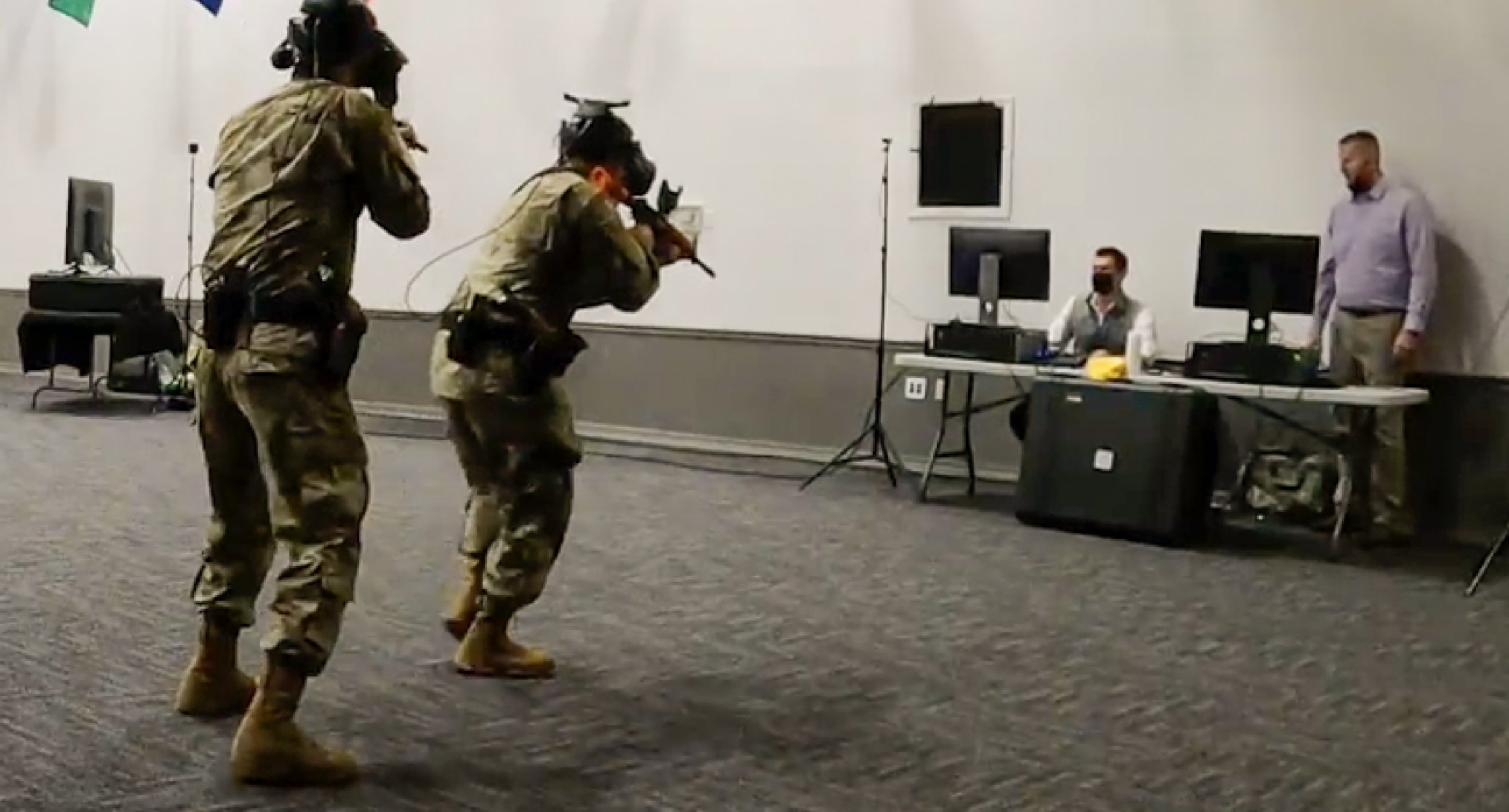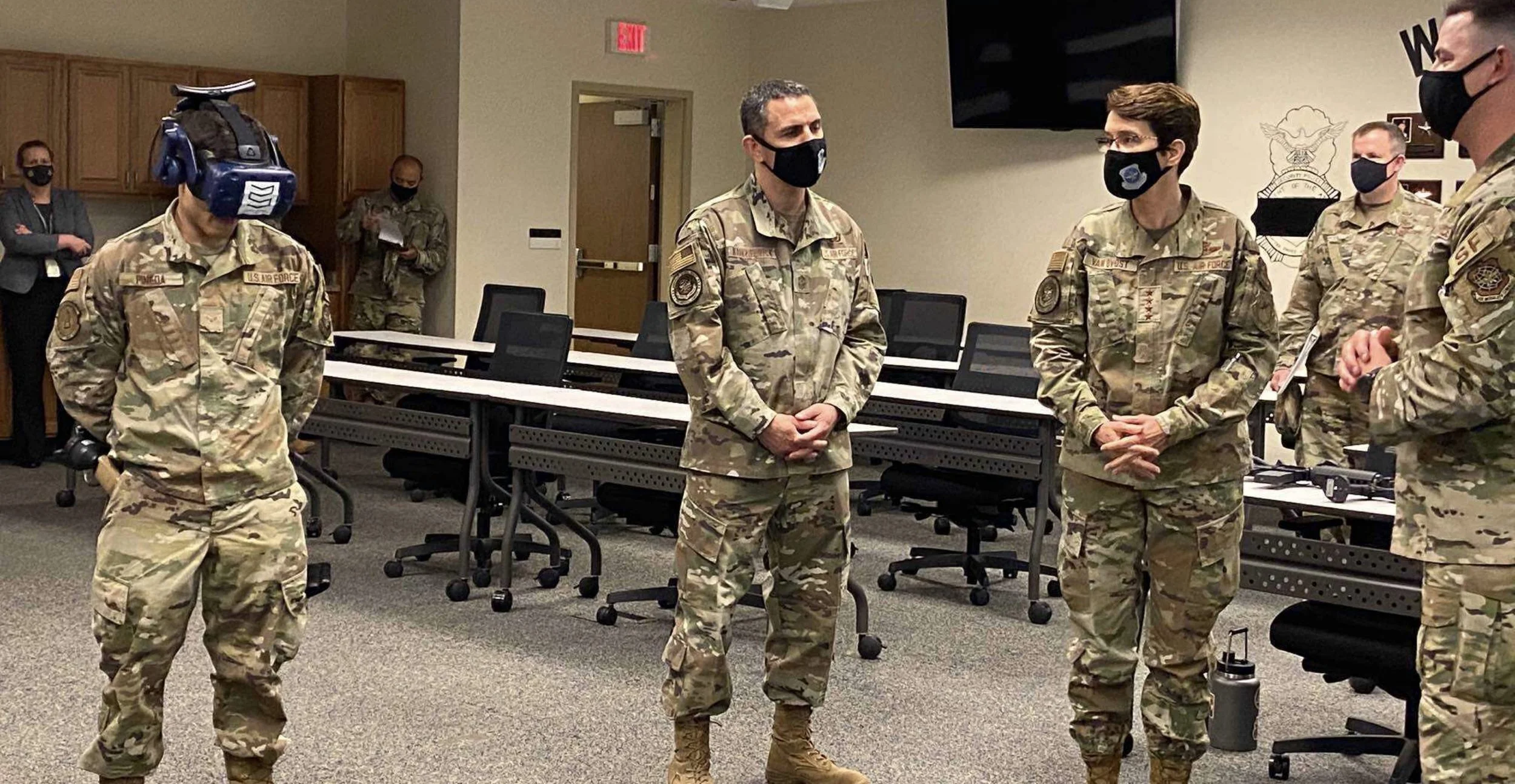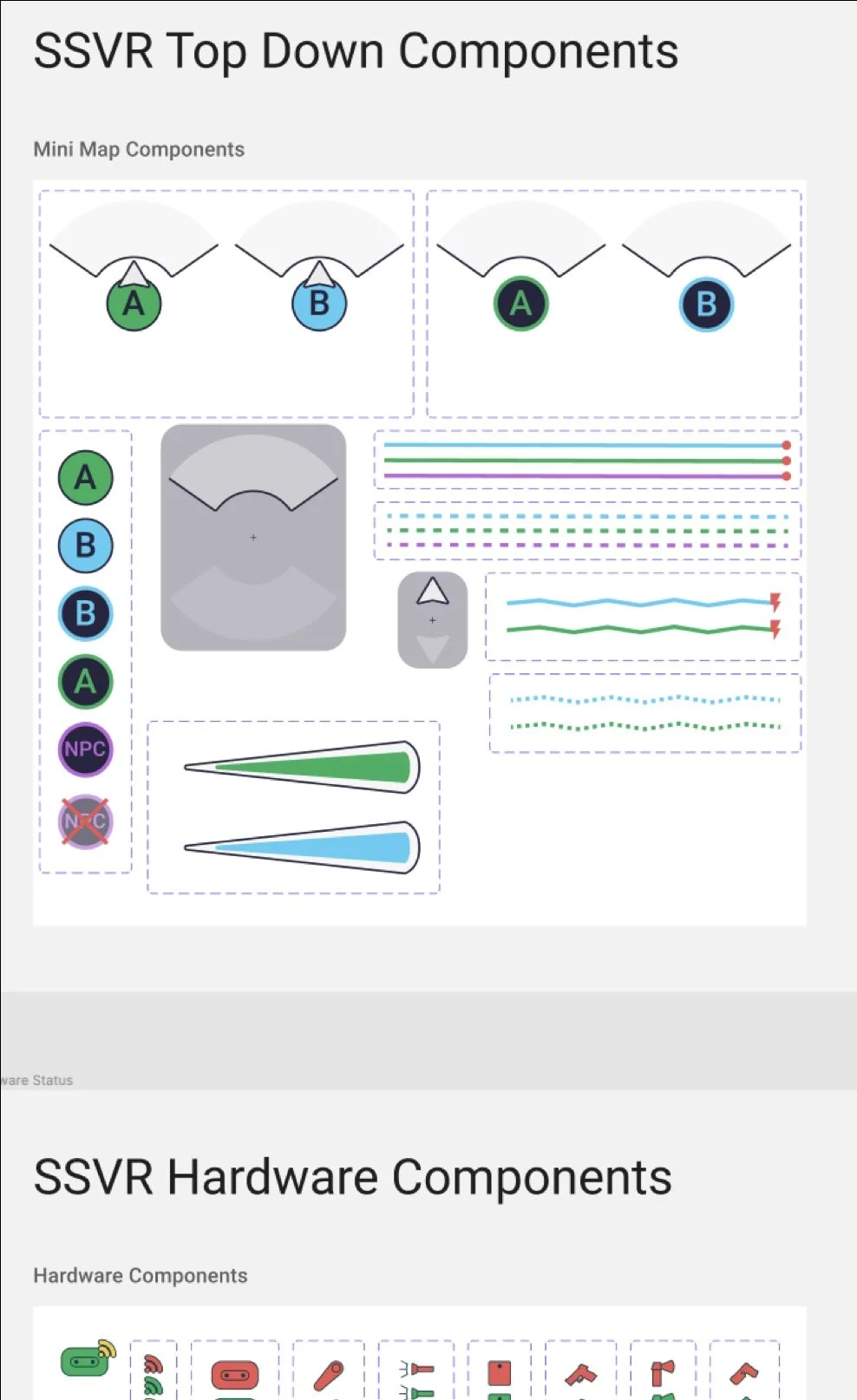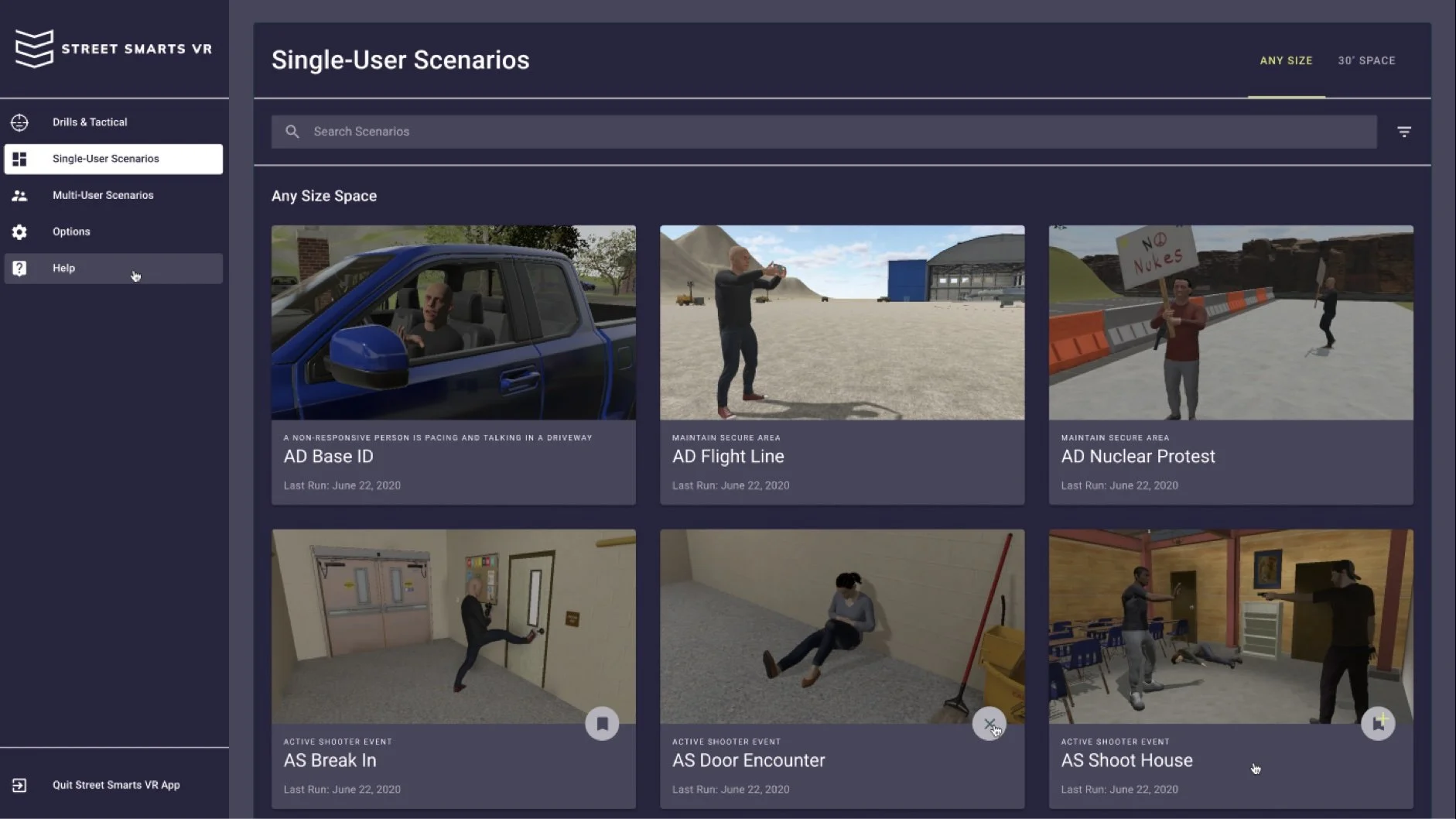
STREET SMARTS VR
Street Smarts VR (SSVR) aimed to modernize law enforcement and military training by immersing trainees in high-fidelity simulations. Traditional training methods were expensive and logistically challenging, relying on physical facilities that were not always adaptable.
Key Goals
Design a student-focused UX for immersive training.
Enhance the instructor interface for scalability and adaptability.
Create a shared language across teams to align on student and training needs.
Research
Conducted in-depth interviews with law enforcement and military veterans to understand real-world training scenarios.
Mapped the instructor's interaction with curriculum, tools, and trainees to identify bottlenecks.
Explored industry grading metrics to integrate existing standards into SSVR’s system.
Ideation
Developed service design artifacts to align stakeholders and anticipate the needs of students, instructors, and government partners.
Designed interfaces accommodating two students simultaneously, balancing legacy user requirements with new usability improvements.
Iteration
Leveraged Figma for real-time collaboration with developers, streamlining iteration cycles.
Adapted Google’s Material Design framework to speed up prototyping while maintaining usability standards.
Validated interface designs through continuous testing, focusing on legacy users and new adopters.
Business Outcomes
Delivered a refined interface in time for a critical government demo with senior Air Force officials.
Although government decision-making paused post-demo, the enhanced design maintained law enforcement training contracts, ensuring ongoing revenue.
Key Learnings
Close collaboration with subject-matter experts accelerated understanding and refinement of complex workflows.
Championing collaboration tools like Figma fostered alignment across teams, even in fast-paced environments.
Iterative testing with diverse participants uncovered key insights into user expectations for VR training systems.




